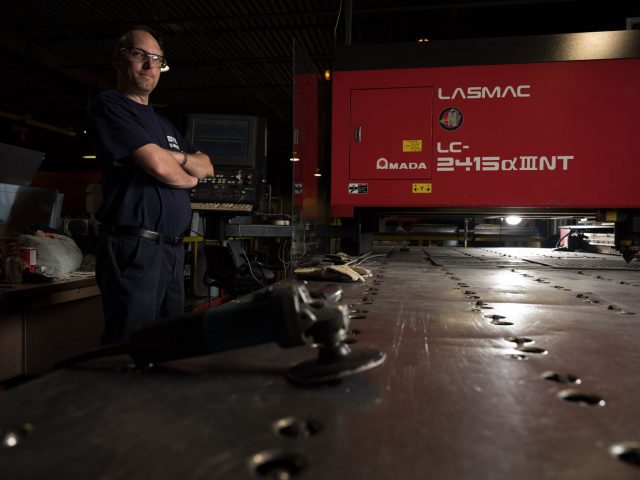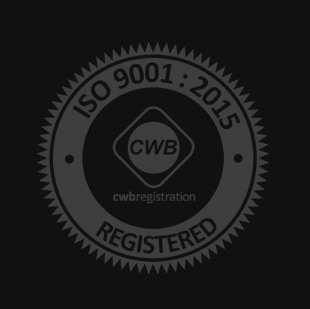Precision sheet metal fabrication is a manufacturing process that encompasses a number of metal fabrication techniques—punching, cutting, forming, and welding, for example—to produce a finished product or precise metal parts used in the manufacture, construction, or assembly of a product, object or device. Look around any doctor’s office or office building, in any household or commercial kitchen, in any car, truck, or bus. From household appliances, electronics, and medical equipment to the many parts and components used to make trains, planes, automobiles, buses, and even buildings—nearly every industry relies on precision sheet metal fabrication processes to some degree. The list is nearly endless.
Though there are many different manufacturing processes that constitute precision sheet metal fabrication, methods of fabrication are limited to only three techniques that either deform the metal workpiece to a desired geometric shape, remove material for the desired outcome or join semi-finished material that has been deformed or subtracted from. In other words, the material is either reshaped, removed, or assembled through one or any combination of fabrication processes to produce complex, precise metal parts or components with high tolerances required for finished products.
Precision Sheet Metal Fabrication Processes
Reshaping material is a fabrication process widely used in the manufacture of precision parts and products. Referred to as forming, it is a technique that involves the reshaping or shaping of material to the desired outcome without material loss. Certain metals hold mechanical properties that permit plastic deformation from one form to another. Plastic deformation changes the sheet metal workpiece to a desired geometric shape or precise form without losing the structural integrity of the metal or affecting its volume. Common forming processes include bending, drawing, stamping, rolling, and stretching.
Subtractive fabrication processes are another method employed in precision sheet metal fabrication. As the name suggests, subtractive fabrication techniques selectively remove the material volume of sheet metal workpieces in the production of a part or product. Workpieces may be separated into smaller parts through precision metal laser cutting, punching, shearing, or machining. Complex geometries produced through subtractive processes are routinely achieved with programmable CNC (Computer Numerical Control) machines. For example, once programmed, a CNC laser cutting machine can create detailed and intricate custom-designed parts with precision, in high volume runs, without any retooling.
Assembly is another fabrication process that is used to transform a part or component into a finished product. Assembly physically joins individual fabricated parts and components through various manual, mechanical, pneumatic, electric, and robotic tools. Welding is perhaps the most familiar method of assembling parts into a finished product, but there are a number of assembly service options used by fabricators to produce products that meet specifications and designs.
A shortlist of assembly techniques begins with PEM setting fasteners. PEM is short for brand designer, Penn Engineering and Manufacturing. It is a self-clinching innovative assembly technology that attaches thin sheet metal material together to provide complex sheet metal product parts. Weld nuts are another assembly process designed for spot welding one metal part to another. The technique provides a permanent threaded feature on assembled finished parts. Stud welds are another assembly technique used in precision sheet metal fabrication. Utilizing metal studs or fasteners, stud welds produce a uniform and complete fusion of the welded surface area noted for its seamless, decorative joining of components. Finally, riveting is another common method that permanently joins two fabricated workpieces together. Riveting is an automated mechanical fastening procedure performed with a pneumatic hammer that permanently fastens parts that can meet the most demanding physical and environmental conditions.
Industries That Use Precision Sheet Metal Fabrication
Precision sheet metal fabrication processes are instrumental to manufacturing parts and components for many industries. Custom fabrication processes are essential in the manufacture of numerous industrial and commercial products. The many fabrication processes allow manufacturers to manipulate sheet metal material into custom parts and components for products, machines, and structures.
A shortlist of industries that rely on precision sheet metal fabrication begins with the entire transportation sector—automotive, aviation, aerospace, rail, bus, and seafaring vessels. Other sectors include building and construction, the manufacture of agricultural products, medical devices and equipment, energy, production of durable goods, equipment and tools in food and beverage, and electronics and telecommunications.
Precision sheet metal fabrication is a common manufacturing process that employs numerous applications and techniques to produce a wide range of consumer and commercial products. The process creates highly-accurate, complex, and detailed metal parts and components. Fabricators use various methods to either selectively remove or reshape a workpiece, and then assemble it into a finished product.
To learn more about our precision sheet metal fabrication capabilities or to inquire about a specific project, please contact us at Quest-Tech today!



